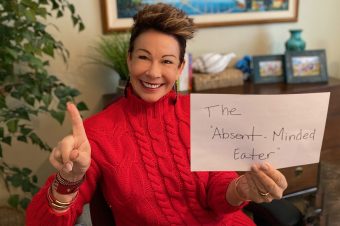Are you outgoing or reserved in social situations?
But wait—your answer doesn’t necessarily determine whether you’re an introvert or an extrovert! It’s about so much more than your personality in one situation.
In this video, Anne and I shed light on how introvert and extrovert energy are expressed in my Energy Profiling system. Understanding how and why you move through life the way you do is one of the biggest gifts you can give yourself.
- (00:52) Let’s define introvert and extrovert, and talk which Type expresses which movement.
- (2:57) Why a person could feel like both an introvert and an extrovert.
- (4:14) How the stereotypes about personality and “socialness” can be an inaccurate way to assess your Type, and how to take a broader look for a more accurate assessment.
Leave a comment and share how this video supported your natural movement!
(Know someone who would find this video supportive? Share this post with them today!)
Discover Your Type of Beauty FREE Today
More resources to discover and support the real you:
- What to Do When You Can’t Figure Out Your Energy Type
- A Profound Process to Know Your Type and End Self-Doubt
-
Are You a Soft Introvert or a Bold Introvert? Here’s How to Find Out
Video Transcript:
Carol: Are you an introvert or an extrovert? The answer may surprise you. Now, when I asked you that question, what did you use to assess your answer? Good chance you considered, what do I act like in social settings? Because I think most people have been taught and concluded that introvert, extrovert self-expressions are, how do you behave in social settings. You know, we have a whole different take on introvert, extrovert and the main takeaway is consider the energy profiling is a study of energy and movement. And so of course, we’re gonna to look at introvert and extrovert as qualities of movement. So Anne, give us the root meaning of intro and extro.
Anne: Intro and extro are both prefixes and intro means inward and extro means to go outward. So there’s the movement right there.
Carol: Yes. And so as I teach in energy profiling, type two and type four are introvert energies.
Anne: An inward movement.
Carol: Yes. And type one and type three are extrovert energies.
Anne: Outward movement.
Carol: Outward movement. And what this looks like is beyond social settings. It’s just, how do you engage with your day to day experience.
Anne: Beyond personality, a lot of the times yes definitely …
Carol: Beyond personality.
Anne: There’s always that question popping up in the energy profiling world, well I’m an introvert or an extrovert because I don’t like social situations or I like small groups of people. And so we define it differently in Dressing Your Truth.
Carol: Yes. And the way, it’s very simple, remember it’s movement. A type one and a type three will move forward. Their energy will move outward engaging them in action, moving forward and they’ll gather information as they go. I say type ones jump forward, type threes push forward. What happens with a type two and a type four?
Anne: Well it’d be the intro experience, type twos and type fours, they first move inward and then move forward. Like, the type twos kinda have this whoosh of a wave, that water feel, you move forward.
Carol: You get a feel for it, gather details. Where a type four will gather information, analytical.
Anne: Type fours is big picture, move forward. And this process can happen very quickly.
Carol: Very quickly.
Anne: It can even be subconscious, but there is that first response to move inward. And maybe this is a very conscious thing, depending on the situation. Sometimes it’s like, whoa, whoa, whoa, I’m moving inward, then I’m moving outward. But it’s always that initial outward or inward movement, with the one and three and the two and four.
Carol: So we really could say every person is both an introvert and an extrovert. Because, as I’m moving forward, I am processing inwardly. As I physically experience the world.
Anne: It’s kinda, what’s that first.
Carol: Yes, but first I…
Anne: [inaudible 00:03:15.288] define it.
Carol: Extrovert is first and then introvert happens while I’m moving. Yours, introvert happens first but then you extrovert yourself and you move forward. And then when we add your secondary energy where I am a three with secondary force, so I’m extrovert introvert. You’re a type two with secondary three, you’re an introvert extrovert. That really changes things up a bit, to say I have that experience of both.
Anne: Yes. And then like a four two, it would be the introvert introvert, that would be more of an inward process, which I think then that translates to social situations. But that’s only one area where that is being expressed.
Carol: Right. And a type one three combo or three one is double extrovert first. So they’re going to be just naturally more outward moving in many more settings in life. So it’s interesting, Anne and I have these extrovert introvert dominant secondary energies expressing. Of the two of us, who do you is more outgoing in social settings?
Anne: Me.
Carol: The answer may surprise you.
Anne: Yeah. Even compared to my type three husband, I’m more social. It’s something I enjoy connecting with people and while I’m doing it though, I’m very much like in my mind, is this conversation going well or I’ll go [inaudible 00:00:00] you know.
Carol: How are they feeling? Are they comfortable?
Anne: There’s that inward quality. More particularly with new people. With people I’m comfortable with and familiar with, there’s not as much processing at the time of course.
Carol: Let’s use the social setting of people you’re not with that often or people that are new. I’m not very outgoing.
Anne: No, you very much keep to yourself.
Carol: Yes. And you’re much more, you know, connecting with people.
Anne: And type ones of course will have a preference to not be as social and type fours can be very chatty. It just depends on the situation, their movement, what’s motivating them to connect with people.
Carol: How you’re feeling today. Now in a familiar group of people, I’m not always as outgoing as Anne either, just depends on the day, that I can be, if…it’s much more comfortable to me to be socially engaging with people I know well. I think we do these two references to our self-expression a disservice a bit when we just make them relative to social settings. So in the world of energy profiling, it’s a much broader look at how you move through life. It is that, do I move forward without having go with the end first, I just am able to move forward and then I process as I go or do I need to have that internal reference, whether it’s details, feelings, analysis, big picture. That’s really the correct assessment in the energy profiling world.
Anne: And that’s just one part of the entire assessment of what type you are.
Carol: Right. Don’t narrow it down to any one specific thing to say which type I am. Too often we take pieces out of it and I’ve heard just literally too many people make references to, well, I’m that type because of one thing. And I’m like that was one thing.
Anne: I think a lot of type ones in particular, because they would be kind of pegged as the most outgoing type in that they’re light, they’re bubbly, they’re maybe more socially…
Carol: There are more type ones that are more outgoing than any other type.
Anne: For sure.
Carol: For sure. We say the majority is in that particular type, they’re going to be more outgoing people, but nothing in energy profiling is a 100%. There are variables based on your background, your childhood influences, was it safe to be you.
Anne: Your secondary.
Carol: Yeah, are you timid in social settings because you weren’t supported as a child to be outgoing and you know, there’s just too many variables there.
Anne: Or supported in learning how to really, that’s something that I’ve had to practice even. So, if that hasn’t really been fostered or practiced, it might make you a little bit nervous in those certain situations.
Carol: You’ve been in many life situations that you’ve had to develop this ability to meet people, help them feel comfortable.
Anne: Carry a conversation.
Carol: Start conversation.
Anne: And there are a lot of times where I’d leave those conversations feeling like, oh, what have I said, what did I do? You know, a lot of that internalizing. We get that question a lot with type ones, are type ones all social? And so I think, especially for that group of type ones where there is kind of this picture of what it looks like, they can feel a sense of relief that, oh, that doesn’t mean I have to be the super social butterfly.
Carol: They’re the most likely though to respond very easily to someone chatting with them in a public setting.
Anne: That’s why I love my type one friends. They’re very easy to talk to.
Carol Yes. They’re very easy to talk to where that may throw off a type four or a type two may not feel as comfortable with that. So I don’t think we should reduce this down to social settings at all because all types have that variable as to whether they’re comfortable and outgoing in social settings. So remember, extrovert means your energy moves outward first. Introvert means your energy moves inward first. And if you’re overwriting that, you’re probably feeling stressed. So honoring your natural movement, whether it be extrovert or introvert, will allow you to feel more peace and ease in being you.
So share in a comment how this has helped you. Because I know this helps create some real ahas and gets rid of some old stereotypes that you may be living under because being your true self is a natural process that’s meant to be effortless.
Did you like this video? I invite you to share it with a friend and your friend will be thanking you for helping change their life for the better. It’s easy. Just click on one of the share buttons below.



